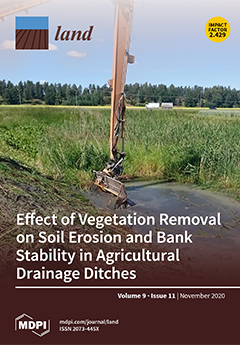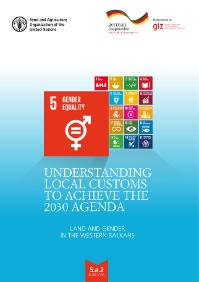Land is essential to livelihoods, so it is hard to overstate its strategic significance for well-being and prosperity. It has been detected that farm size greatly influences agricultural sustainability from the viewpoints of the economy, environment, and society. Land concentration is negatively…
The majority of Europeans live in cities, where parks as components of Urban Green Spaces (UGSs) play an important role in well-being and the provision of ecosystem services (ES). UGSs are especially relevant for the implementation of the United Nations (UN) Agenda 2030 Sustainable Development…
The article sought to understand public perceptions on city landscaping during the outbreak of COVID-19. The research aimed to discuss the theoretical aspects related to restrictions on travel during the pandemic and city landscaping and to conduct an empirical study of experiences of the…
Effective management decisions regarding greenhouse gas (GHG) emissions may be hampered by the lack of scientific tools for modeling future land use change. This study addresses methodological principles for land use development scenario modeling assumed for use in processes of GHG accounting…
Soil tillage intensity influences the chemical composition of soil, the distribution of nutrients, and soil physical and mechanical properties, as well as gas flows. The impact of reduced tillage on these indices in faba bean cultivation is still insufficient and requires more analysis on a…
The average land productivity score is about 41.8 in the Republic of Lithuania. However, in separate regions it ranges from 30.5 to 55.1. The research object is agricultural utilities in rural municipalities of the Republic of Lithuania. The analysis of land use plan fragments in the selected…
The article presents an analysis of the existing situation of forests of the Republic of Lithuania. The situation is analysed in ten counties of the country. In the Republic of Lithuania, forests occupied 2,178,958.04 ha, country’s forest coverage – 33.38% in 2017. The highest forest coverage…
The territorial planning and the management of urban surfaces force the decrease of green spaces in urban landscapes. As the urbanization process during past decades of the last century was quite intensive not only in Europe but also in Lithuania, findings describing changes of forest cover as…
Type of land use is a territory of land surface according to its natural characteristics and the current economic use of the land. In relation to the changing economic environment, land monitoring institutions are investigating and implementing methods for obtaining new data on land use pattern…
The article presents the analysis of the current situation of the forest area in Alytus and Vilnius Counties. Comparative, analytical as well as statistical and logical analysis methods were used for the investigation. The aim of the investigation is to carry out the analysis of the Alytus and…
The conference is aimed at dissemination of scientific research results, sharing of experience, improvement of foreign language and cross - cultural communication skills, and establishing of international contacts. The conference papers covers wide range researches of students from…
FAO and the Deutsche Gesellschaft für Internationale Zusammenarbeit (GIZ) GmbH have been providing support to the Western Balkans region to promote progress on Gender Equality, with a focus on measuring the proportion of countries where the legal framework guarantees women’s equal rights to land…







